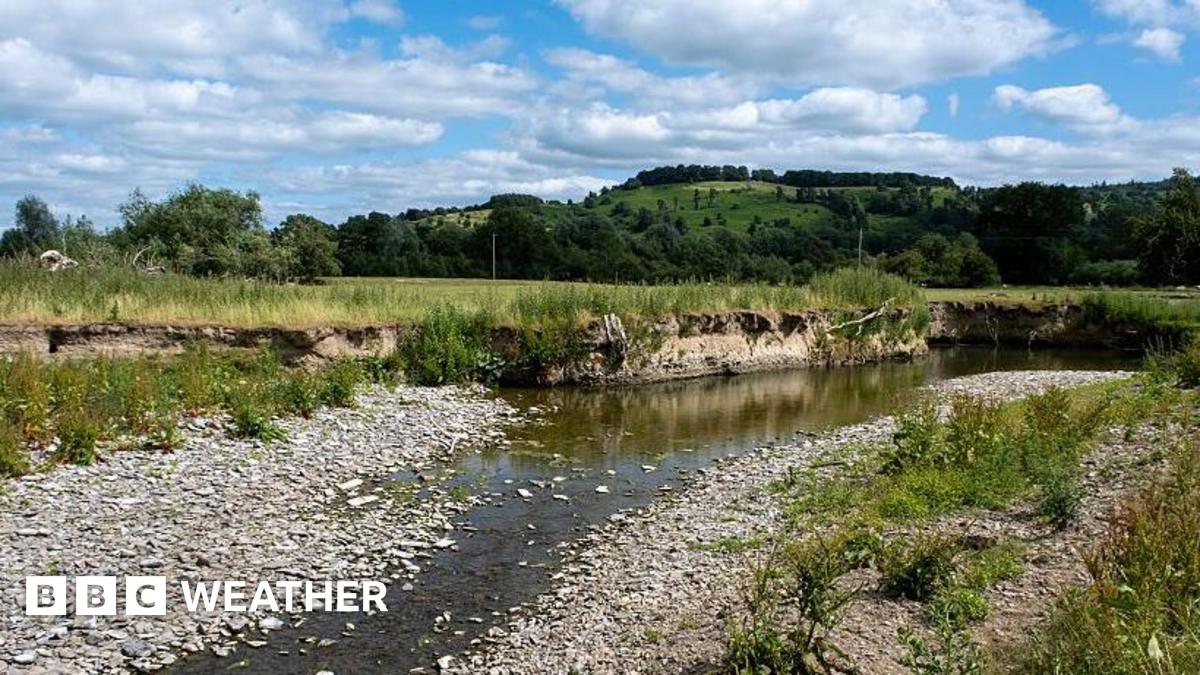More hosepipe bans possible as UK drought threat builds
- BBC News
The Environment Agency declared drought in the West and East Midlands on Tuesday.
Yorkshire and north-west England are already in drought. Hosepipe bans are in force for customers of Yorkshire, Southern Water, South East Water and Thames Water with other companies warning of similar action if nothing significant changes to water supplies.
While rainfall could fall into the normal range for some over the next month, eastern and southern areas are more likely to stay drier than average.
In the UK during hotter, dry spells we often start to make comparisons to the historic drought of the summer of 1976, but it is not always that straightforward.
Our dry spring and start to summer is increasingly apparent across parts of the UK
So many factors can lead to a drought that just looking at rainfall or water reserves isnt enough.
Population growth, urban expansion, changes in water usage over time - for example for supporting different industries - are all part of the mix as well as the more obvious groundwater or reservoir levels, plus rainfall totals and just as importantly - where it falls.
In the UK we have two definitions of drought. In meteorological terms it refers to a sustained period of dry weather, and in hydrological terms it is about a lack of water resources.
We tend to have hydrological droughts following the drier periods simply due to the lag between rain falling, and it getting through river systems and into storage such as a reservoir or groundwater aquifer.
Spring was the second driest on record for England, the sixth overall across the UK.
While spring rainfall is important, especially to river and reservoir levels, for the whole picture we also need to look at autumn and winter rainfall which feeds groundwater levels.
For UK scientists the hydrological or water year runs from October to September, which enables it to take into account often higher levels during the winter that recharge systems.
Analysis by BBC Weather shows that since the start of the latest hydrological year in October 2024, and up to the end of June 2025, UK rainfall is running approximately 20% below average.
This makes it one of the driest periods since the infamous 1976 drought.
And for eastern and south-east England, rainfall in 2025 so far hasnt been as low in nearly a century.
Rainfall since the start of the 2024/2025 hydrological year has been around 20% below average
Some caution is needed when you directly compare years when droughts or hosepipe bans have been introduced, as some will be the result of cumulative dry conditions over more than one 12 month period.
However, it is interesting to note just how dry this hydrological year has been so far.
The last significant hosepipe ban in the UK was in the record-breaking summer of 2022 when a top temperature of 40. 3C was recorded at Coningsby, Lincolnshire. The ban affected nearly 20 million households.
By the start of spring that year, rainfall was standing broadly around average but that was followed by a summer that ranked among the hottest and driest for England.
With this combination of lack of rainfall and hot weather, parts of the UK went into a flash drought, external.
Similarly, in 1994/95, after the rain abundant winter, rainfall was above average but it turned much drier in the spring and summer leading to river and reservoir levels quickly depleting.
Consequently most UK areas went into drought by September 1995 which continued throughout the following year.
By comparison this current year has been drier than both these periods.
After prolonged dry and hot weather in the summer of 1976, water became so scarce that household supplies were shut off and standpipes were introduced.
Regarded as the most severe drought the UK has faced in modern times, it has acquired almost mythical status and become the benchmark.
With below average rainfall throughout 1975, the situation didnt improve from the October to June 1976 with only 626mm of rain - far less than average.
While severe at the time, it did not actually last that long with heavy rain - and flooding - occurring in the September.
During this hydrological year from October 2024 to June 2025, we have had a total of 704mm, so in terms of rainfall we are in a slightly better position.
What happens with the forecast for the rest of this summer though will be important and the reason behind why we have already seen water companies applying restrictions.
The 1976 drought is generally thought of as the most severe in UK history
While some of the UK has experienced rain since the end of the last heatwave, the long-term forecast for some may be worrying.
Southern and eastern areas of the UK are forecast to experience drier than normal conditions through the next month to mid-August.
More northern and western areas may have rainfall closer to normal.
Steve Turner, a hydrologist from the UK Centre for Ecology & Hydrology, said: "The low river flows we are seeing in eastern Britain - which are exceptionally low in central and eastern England - are likely to continue for the July-September period."
Although for western areas, he said flows are likely to be within the normal range.
While droughts are complex to forecast this might give us an indication that with drier than average weather on the way, we could well be seeing more widespread restrictions in the coming weeks or months.
Graphics produced by Becky Dale, BBC data visualisaton team